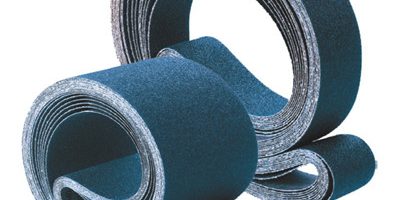Sanding belts are powerful tools used in various industries, but they also pose certain risks if not used correctly. Safety should always be a top priority when working with sanding belts to prevent accidents and injuries. In this blog, we’ll discuss essential safety tips to keep in mind when using sanding belts.
1. Personal Protective Equipment (PPE):
- Safety Glasses or Goggles: Protect your eyes from flying debris and dust generated during sanding. Choose safety glasses or goggles that provide full coverage.
- Dust Mask: Wear a dust mask to avoid inhaling wood dust, metal particles, or abrasive materials. Use a mask with an appropriate filtration rating for your work environment.
- Hearing Protection: Sanding belts can be noisy. Protect your ears with hearing protection, such as earplugs or earmuffs, to prevent hearing damage.
- Gloves: Use gloves to shield your hands from sharp edges, splinters, or abrasive materials. Ensure the gloves fit well and don’t create a hazard.
2. Secure Workpiece Holding:
- Workpiece Clamps or Jigs: Secure your workpiece with clamps or jigs to prevent it from shifting or being pulled into the sanding belt unexpectedly. This is especially important when sanding small or irregularly shaped items.
3. Proper Belt Tension and Tracking:
- Ensure that the sanding belt is correctly tensioned and tracking evenly on the pulleys. A loose or misaligned belt can lead to accidents.
4. Avoid Loose Clothing and Jewelry:
- Wear appropriate work attire, avoiding loose clothing and jewelry that could get caught in the sanding belt. Loose items can pose a significant safety hazard.
5. Maintain Clean Workspaces:
- Keep your work area clean and free of debris to prevent tripping hazards and reduce the risk of dust accumulation. Proper dust extraction systems or shop vacuums should be used to control dust.
6. Even Pressure and Movement:
- Apply even and consistent pressure when sanding. Avoid excessive force, as it can lead to loss of control or material removal that is too aggressive.
7. Inspect the Sanding Belt Regularly:
- Check the condition of the sanding belt before and during use. Look for signs of wear, damage, or clogging. Replace worn or damaged belts promptly.
8. Follow Manufacturer’s Recommendations:
- Adhere to the manufacturer’s guidelines and recommendations for the specific sanding belt and equipment you are using.
9. Training and Skill Development:
- Ensure that anyone using sanding belts in your workspace receives proper training and understands the associated risks and safety procedures.
By following these safety tips, you can minimize the risk of accidents and injuries when working with sanding belts. Remember that safety should always be a priority, and taking precautions is essential to create a safe working environment.










